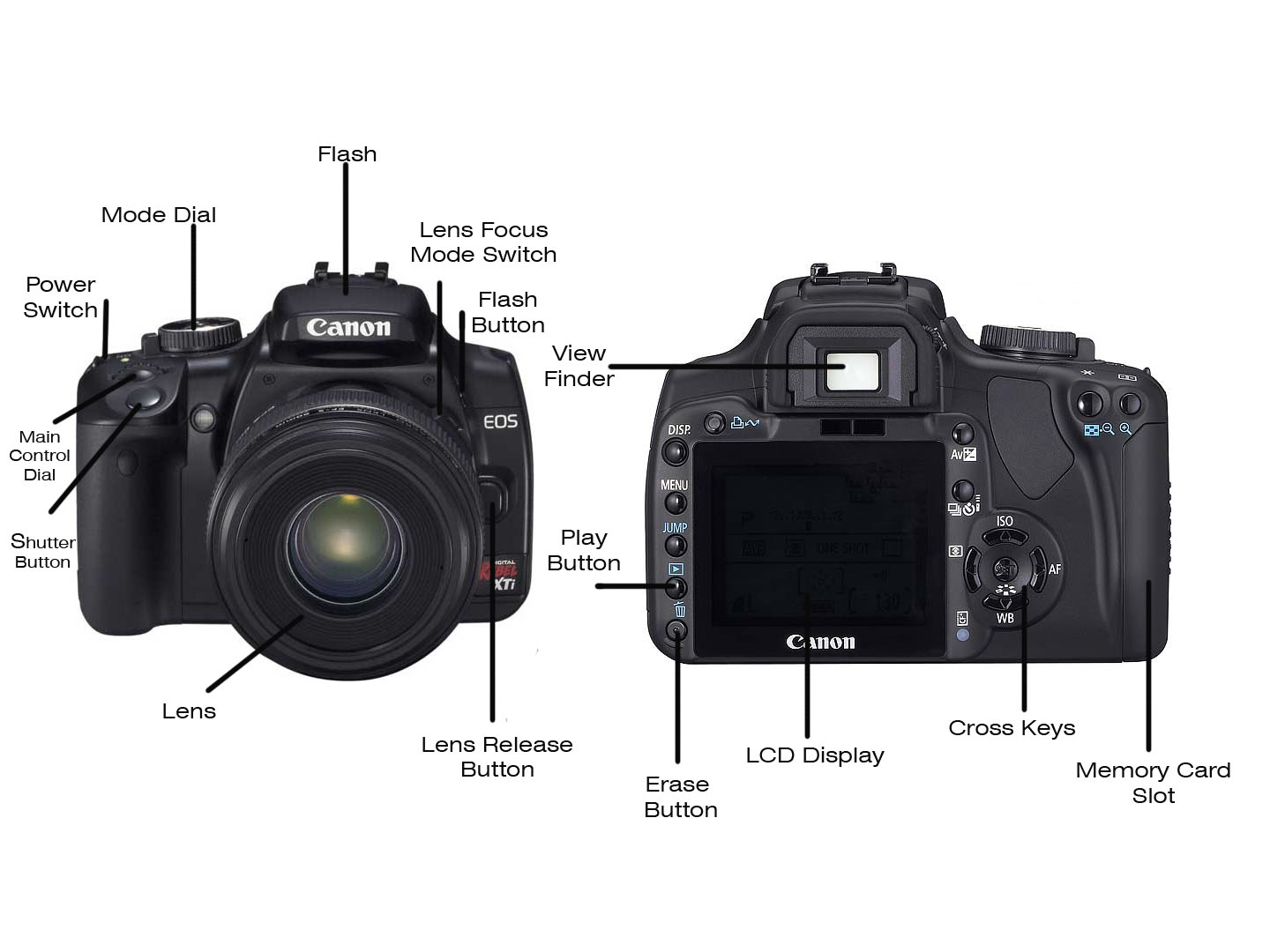Best Cameras for Product Photography: How to Make Your Next Investment
Looking for the best camera to shoot product photos? No matter your budget or skill set, this roundup of best cameras for product photography has something for you.
Whether it's on or offline, businesses use product photography to make their products stand out and drive sales. In fact, nearly half of consumers consider product images to be the most important factor in their purchase decisions.
Receive free ecommerce & product photography tips
Your product photos leave an impression on potential customers, reflect your brand and represent your product's quality.
When you're setting out to take quality product photos, you need the right gear. Lighting and lenses are very important, but before you consider any of that, you need the camera itself.
In this article:
What is a dSLR camera?
There are a few types of cameras widely used today, but not all cameras are equal. When you're looking for the best camera for product photography, you'll have to decide between dSLR, mirrorless, point-and-shoot and even smartphone.
Each of these categories has different offerings that are vital to understand before you make a purchase. Here's a quick overview.
What is a dSLR camera?

A digital single-lens reflex camera (dSLR) has a body and an interchangeable lens. Light travels through the lens to a mirror that reflects the light, which then sends the image to an optical viewfinder. This method enables you to see what you're shooting so you can compose your images more precisely — there's no offset like you get with a point-and-shoot.
Most dSLRs have a high pixel count and a large sensor, which is what captures high-resolution photos — even if the image is cropped.
In addition to manually controlling the settings, one of the most important selling points of dSLRs is the interchangeable lens — allowing for a variety of effects and a greater diversity of looks in your portfolio. Whether you need a macro lens for details or a wide-angle lens to capture an interesting perspective, you'll need a dSLR to make it work.
(To be frank, a dSLR will almost always be the best camera for product photography. If your budget doesn't allow for it, that's okay — there are still other viable options.)
What is a mirrorless camera?

Smaller in weight and size, mirrorless cameras have a lot of the same benefits of a dSLR including interchangeable lenses, manual settings and high resolution. But unlike dSLRs, instead of seeing what you're shooting through a viewfinder, with less-expensive mirrorless cameras, you still set up your shot on a digital screen. This is great if you're used to shooting with your smartphone.
Another important difference to note is that the sensor in mirrorless cameras is smaller than most dSLRs, resulting in low performance when shooting in low light. And since mirrorless cameras are relatively new, there are fewer lens options.
What is a point-and-shoot camera?
Remember taking photos of your friends with a Nikon COOLPIX back in the day? That was a point-and-shoot. Also known as a compact camera, a point-and-shoot is designed to be simple — there's usually one button for the shutter and just a few choices in a digital menu. The main advantages of these cameras are the size and weight, as they're easy to carry and don't require any accessories for travel. And of course, point-and-shoot cameras are almost always cheaper than dSLR and mirrorless camera systems.
The downside of point-and-shoots is that they're equipped with fixed lenses, meaning they're not interchangeable like dSLR and mirrorless cameras. Another common characteristic of point-and-shoot cameras is their depth of field, which brings everything in your frame into focus, creating a sharp image. Unfortunately, this can make your product look flat or uninteresting.
How do you decide which type of camera you need?
Tips for buying your next camera for product photography
If you're only taking product photos to use online, remember to focus more on the lens than the megapixels. While megapixels add clarity to your images, it's not as important in a digital space versus print.
Always do your own research and keep in mind that your equipment doesn't have to be state-of-the-art, especially if you have a good eye. Find a local camera shop or library where you can take a camera for a test drive — many offer cameras for rent.
If you go with a dSLR, remember you'll also have to invest in lenses that work with what you'll be taking photos of.
What is the best lens for product photography?
Before we dive into camera specifics, there's one more thing to consider. When it comes to dSLRs and mirrorless cameras, it's not only the camera body that matters, you need to think about the lens, too. After all, even the most high-end body can take a crummy photo with a low-quality lens and vice versa.
For convenience, we thought we'd give you a short list of the best lenses for product photography, too.
Here's what you need:
Just getting started: a "nifty fifty" millimeter lens
If you're new to product photography, a great place to start is with a 50mm lens on a full frame or a 35mm lens on a crop sensor.
The nifty fifty is also called a normal lens because it makes the subject of your photo appear, well, normal. With this lens, there shouldn't be any noticeable distortion, so it's a go-to for any product photographer.
Recommendations:
- Nikkor
- Canon
- Sigma
- Adding details: a solid macro lens
If you're ready to add to your lens arsenal, the next thing you need is a macro lens. These lenses range from 50 to 200mm and help you capture every single detail of a product — from the tiniest seed on a strawberry to the glint off a pair of stud earrings, a macro lens will help you capture it all.
Pro tip: Make sure your macro lens is a prime lens (as opposed to a zoom) for the best clarity and sharpness.
Recommendations:
- Nikkor
- Canon
- Sigma
- The workhorse: a 70-200 zoom
We know what you're thinking: Why add a zoom when we just said primes are the best? The truth is, not all shooting situations are created equal.
When you've got a couple of primes and a sharp copy of an excellent zoom lens, you're prepared for anything a product photo shoot can throw at you. You may have to back up a bit more than you do with the nifty fifty or the macro, but with a sharp 70-200, you'll still be able to create a wide variety of images no matter what the product is.
Word to the wise: We keep bringing up sharpness because sometimes zoom lenses don't have the knife-sharp clarity of a prime — even between lenses of the same make and model.
When you buy your lens, make sure you're working with a reputable source (we like B&H Photo Video for new, and KEH.com for used) so you can return it easily if your copy isn't quite sharp enough.
Recommendations:
- Nikkor
- Canon
- Sigma
- The dream lens: a tilt-shift
Once you've got a nifty fifty, a macro and a great 70-200 in your kit, the next great lens for product photography is a tilt-shift.
If you're shooting basic Amazon-style images on a white background, you won't ever need to worry about this. But if you truly want to set your style apart, a tilt-shift lens can be just the thing to get you there.
Recommendations:
- Nikkor
- Lensbaby
Okay, now that we've discussed lenses, let's jump back to cameras so you can start your decision-making process.
Here are the best cameras for product photography 2019
Tags : best camera for product photography 2018 , best mirrorless camera for product photography , best camera for product photography reddit , best camera and lens for product photography , best cameras for product photography 2019 , best cameras for product videos , best lens for product photography , best camera for professional photography
Best Cameras for Product Photography
 Reviewed by Ab World
on
November 20, 2019
Rating:
Reviewed by Ab World
on
November 20, 2019
Rating:
 Reviewed by Ab World
on
November 20, 2019
Rating:
Reviewed by Ab World
on
November 20, 2019
Rating:




No comments:
Please do not enter any spam link in comment box .